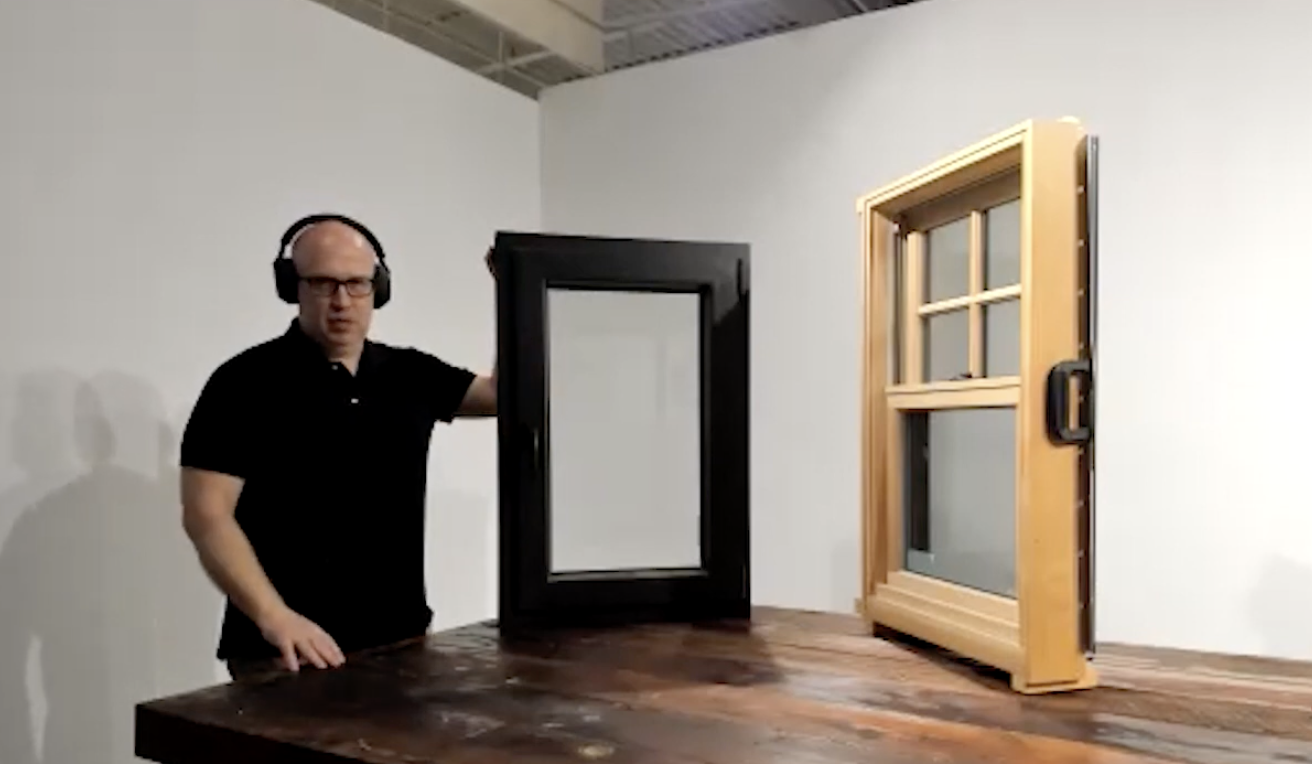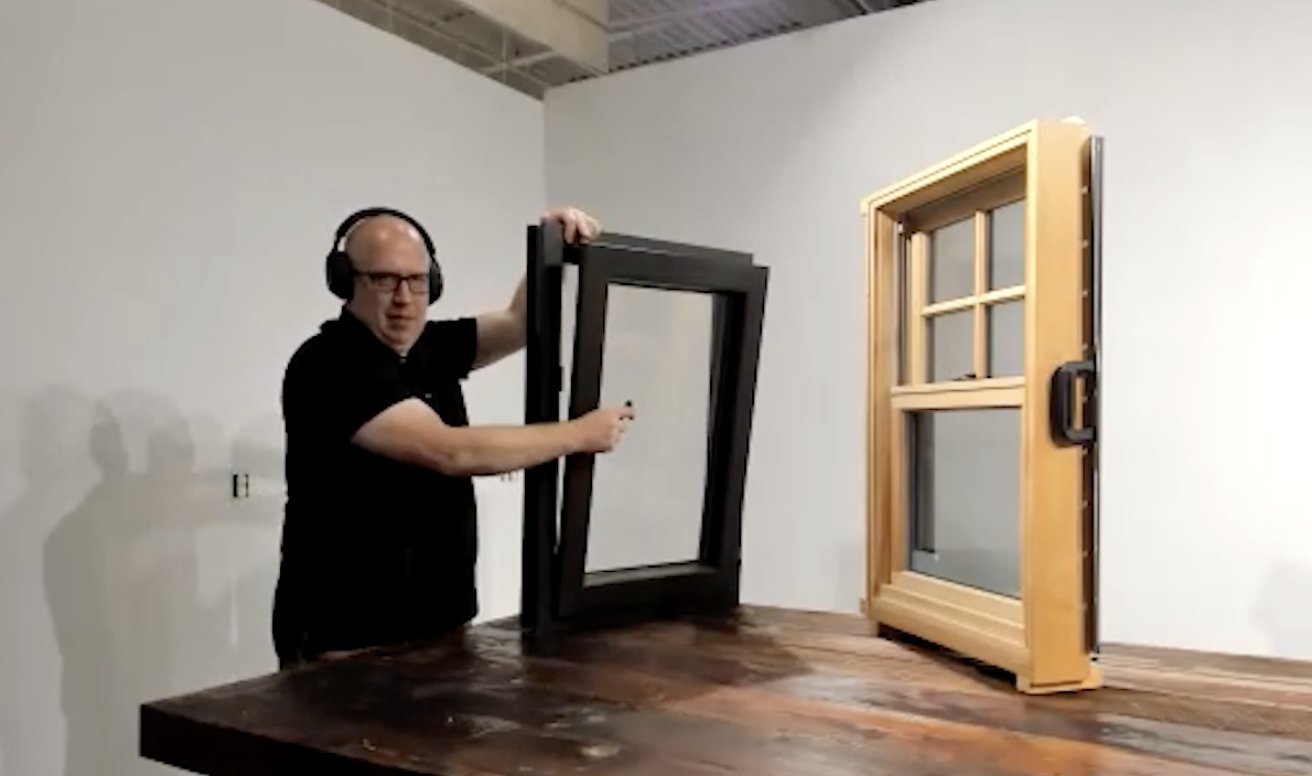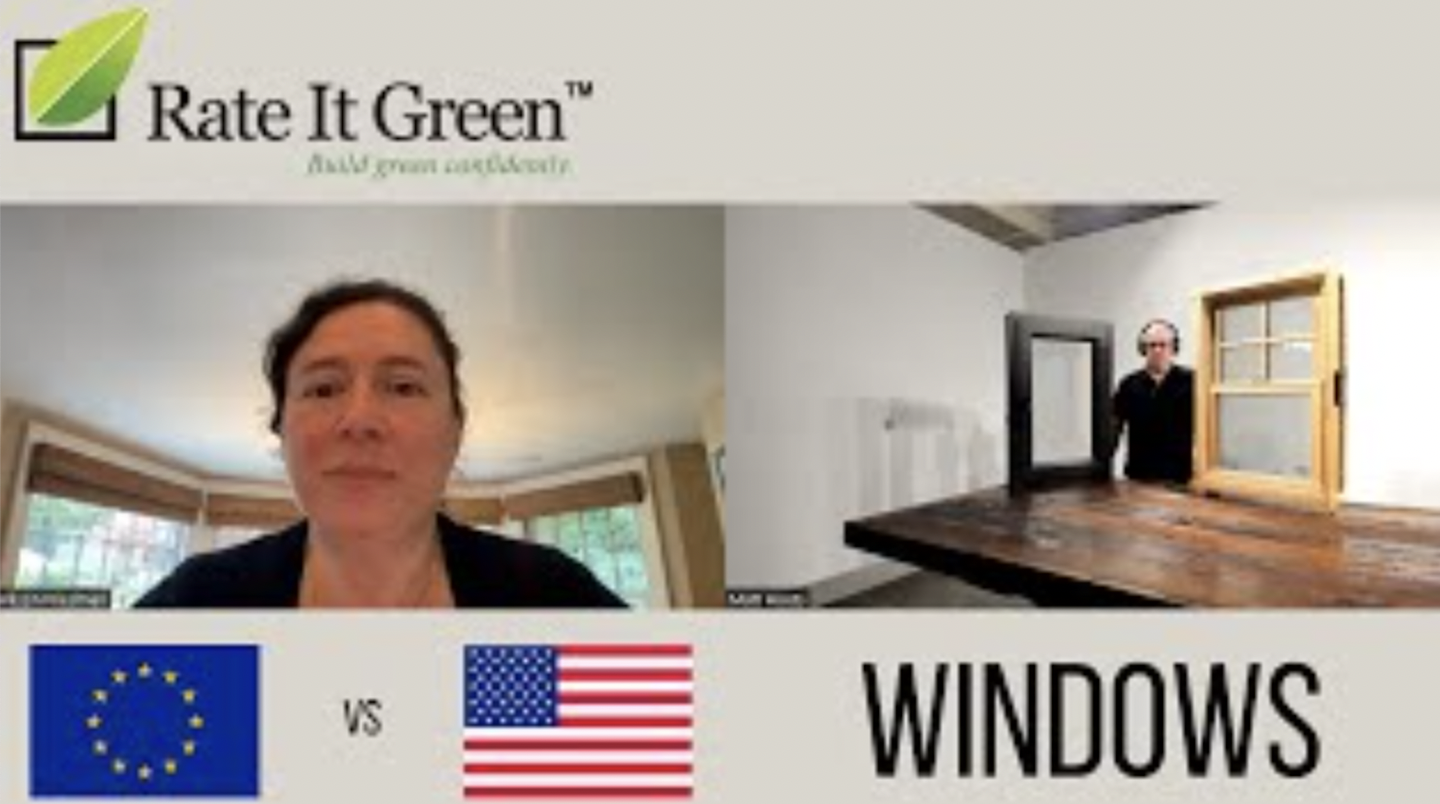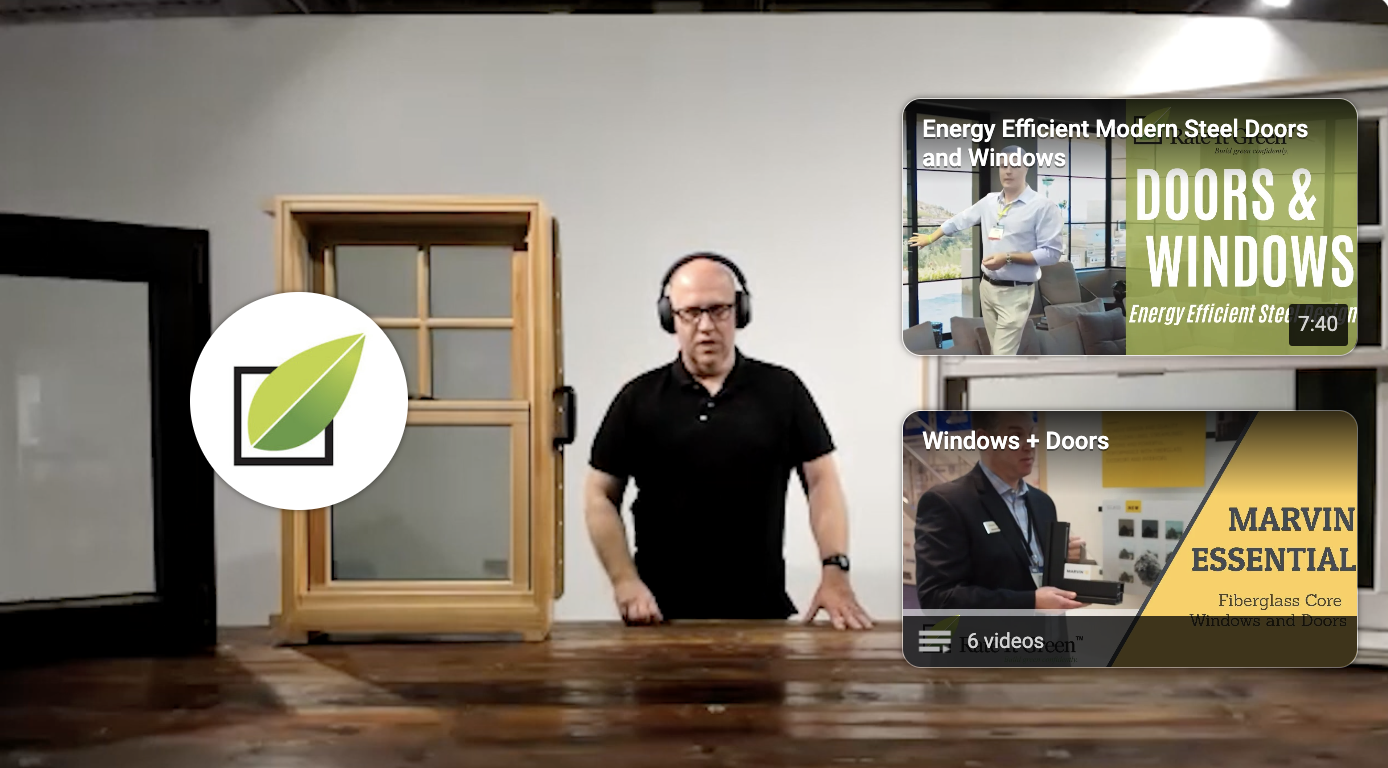Green Building Community
European vs. American Windows - What's the Difference?
Posted by: Rate It Green Team
Have you been wondering what the difference is between European and American windows? (And have you had a European window seem to fall on you during vacation, and perhaps you panicked?) Check out this video by Green Builder Matt Hoots of Sawhorse, Inc., and you'll be on your way to sounding like an expert. We can summarize some key points here, but the visuals and Matt's explanations will also likely be helpful.
One main difference between a European and American window is in functionality, or in operability. In other words, they open differently. European windows are typically casement windows, a single panel of glass with a modern clean look, and they have a tilt sash, which means the moveable part of the window tilts. In European windows, the windows tend to tilt IN towards the inside of the building, where American casement windows tend to tilt out. European windows ALSO tend to have side hinges and can also therefore swing in sideways. These windows can seem very different compared to the typical American double hung window that slides up and down, or even to an American casement window that might tilt out.
European windows tend to be highly energy efficient. A single panel of glass can provide an energy efficiency advantage, as there are fewer grills and gasket openings, which can allow air and energy leakage. The lack of grills also happens to contribute to the modern look of these windows.
A European window screen would typically be on the outside, which is also true of American windows, with the exception of casement windows. American windows that tils out would run into an outside screen. European homes tend to have exterior mounted shutters - these are not typical in America and can cause an egress challenge.
European windows tend to have thicker frames, so they're stronger. This strength can come into play with longer durability, especially if an install isn't perfect. They can also be more forgiving to install, since the window will not yield.
Note that window treatments can be a challenge with European windows, as a window tilting in might hit or conflict with window treatments. Blinds in front of the window that can be completely moved before opening will work well. Blinds set in the window casing will prove a challenge when the window bumps into them.
It's important to note that you can find energy efficient windows whether you select a European or American window. Functionality and aesthetics are likely to play a large role in your choice.
Why choose an American window? Design preference is a significant reason for selecting American winnows, and they are also typically less expensive as well. You might prefer windows where the sash moves up and down, or where the look is more typical to what you're used to, or you might prefer additional, "divided" panels. Some people prefer these divided lights for looks alone, while others perceive added privacy added privacy from the additional panels, as they break up views to some extent. Other people prefer windows with fewer panels, particularly where they wish to see more of a clear view. You can also mix the look of your window depending on your design goals and view preferences, perhaps using some single panels and some divided lights, or some casement windows and some sliding sashes.
Matt has some suggestions for manufacturers of both window types. For European windows, he's working with a company that was responsive to his desire to have nail fins attached to the windows for easier, accurate installation. He points out that some European window installation instructions assume brick and masonry exteriors, which are more common in Europe. The tape suggested for installation with these endows is not rated for more than 5 or 10 years, which introduces durability risk. Matt's advice is also not to order anything too custom, or you run the risk of people not knowing how to install it properly! For American windows, Matt requests stiffer frames that won't twist or bow out over time and with changing conditions. The idea is to make installation easier, and not make builders have to "fight" the windows for a perfect installation (Make them "idiot proof," he suggests), or years later when repairs or replacement might be needed.
The good news is that Matt's confident that both window types installed properly, can provide a great level of energy efficiency. He reminds us that any window not installed correctly introduced risk we can't blame on the window itself, and he suggests always testing our work, even using a smoke pencil if not a more sophisticated home test. If you see air moving around the windows, it's not a good sign. Installed properly, you will not see that air.
What are your questions about European versus American windows? What are your other window and entry efficiency questions, or advice you might have to share? Jump in and add your voice to the conversation!
If you'd like to learn more about windows and energy efficiency, see our additional window discussions and articles!
- Windows and Energy Efficiency - Factors for Making Better Choices
- Top Factors for Selecting New Windows
- Deciding When to Replace Windows
- Energy Efficient Steel Windows and Doors - Arcadia Custom




Roy R // Engineer working on living a sustainable life
The European style "tilt-turn" windows or casement style windows that have a cam or lever action locking mechanism are much more energy efficient than double hung windows. They seal well all around the opening so air infiltration is minimized. While double hung windows might have some design advantages for some, they are not energy efficient when compared to the "tilt-turn" style. The "tilt-turn" windows have U values as low as 0.11 and air infiltation as low as 0.01. Double hung windows are nowhere near as energy efficient.
Please be kind and respectful!
Please make sure to be respectful of the organizations and companies, and other Rate It Green members that make up our community. We welcome praise and advice and even criticism but all posted content and ratings should be constructive in nature. For guidance on what constitutes suitable content on the Rate It Green site, please refer to the User Agreement and Site Rules.
The opinions, comments, ratings and all content posted by member on the Rate It Green website are the comments and opinions of the individual members who posts them only and do not necessarily reflect the views or policies or policies of Rate It Green. Rate It Green Team Members will monitor posted content for unsuitable content, but we also ask for the participation of community members in helping to keep the site a comfortable and open public forum of ideas. Please email all questions and concerns to admin@rateitgreen.com


